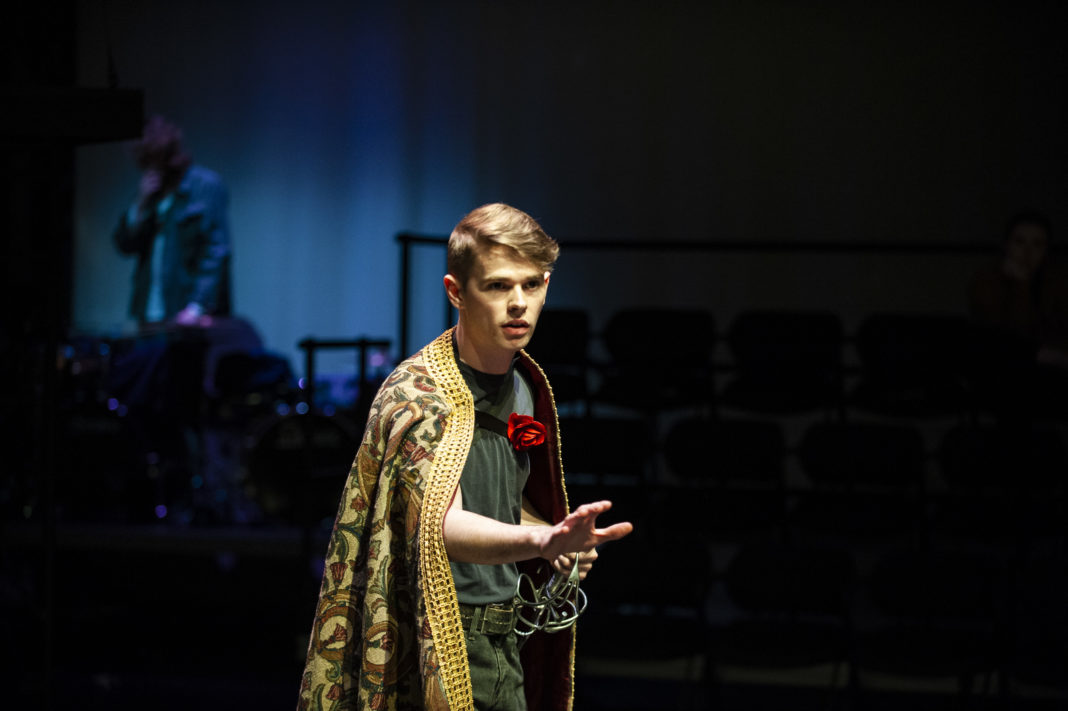The second part of Theatre and Dance Department professor Holly Cate’s adaptation of Shakespeare’s War of the Roses trilogy, O War, was performed. This play was a follow-up to the first installment in Cate’s trilogy, Glory, which premiered on the Muhlenberg mainstage last year.
Although O War was a clear continuation from the first play in the trilogy, Troy Dwyer, the faculty director, as well as the various designers, did excellent work in making this play stand out as its own entity as well. All of the elements of the play, from the script to the performances to the design, came together to create a seamless, immersive production.
The part of O War that was instrumental in making it a unique production was its staging. O War was performed in the Empie Theatre, which is usually a typical proscenium theatre with the audience on one side of the stage. However, the unique setup for O War put the audience on the stage and in the round. In addition, massive pieces of white fabric were hung up on all of the sides of the stage, completely closing the audience in with the action of the play and creating a totally immersive environment.
Besides being in the round, the audience was immersed through the soundscape, designed by Muhlenberg student Benedict Dawn-Cross ’20, who also served as the production’s musical director.
The soundscape partially included Dawn-Cross’s constant playing of percussion live on stage, as well as the work of the Dogs of War ensemble, who battled behind the white fabric to mirror the battles on stage. This immersive experience made the show that much more intense and enthralling for the audience.
Cate’s script and the sheer number of characters in the play would occasionally make the plot hard to follow. However, as soon as the audience had the potential to maybe get bogged down in the politics, the script became quite self-aware, largely through the ensemble of actors playing the Clowns. They would either comment on how convoluted the situation appeared at first glance, or they would clarify the different characters and the plot. They also served as a fantastic way to convey the themes like the brutality of war to the audience and even to each other.
The script proved to be a beast for the actors to tackle throughout the rehearsal process; as Jake Erickson ’21, who played one of the Clowns, described: “Although it was an exceptional privilege to get to work with Holly [Cate] to strengthen the clarity of the script and find added layers and depth in each individual character, sometimes it was tricky to handle new script pages while lifting a dead body over your head.”
However, it seems like the cast took the changes in stride, as the final script seemed more cohesive and gave each character the depth that Erickson discussed.
A large part of what made the ensemble of Clowns such a crucial and wonderful part of O War was the fact that they all worked together as a group extremely well, but each actor did an excellent job of allowing each of their individual characters come through.
In talking to Erickson, he explained that a large part of the individualization of the different characters in the ensemble came from the actors themselves: “The script does not specify which clown has what line. Each time a clown speaks it is up to the clown ensemble to decide which voice fits the line best.”






















